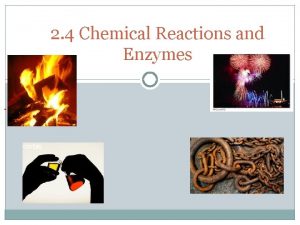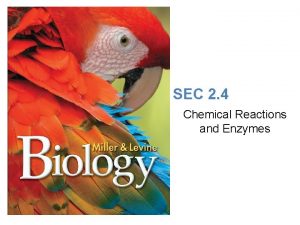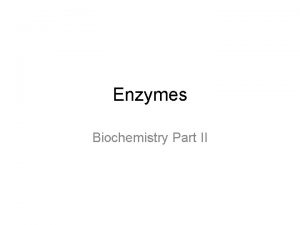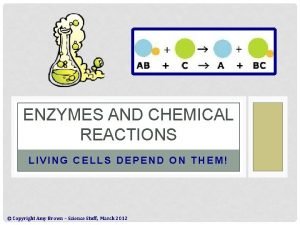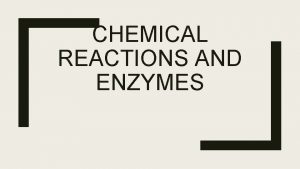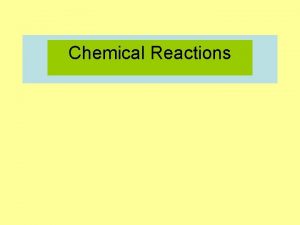Enzymes Chemical reactions and Enzymes Chemical reactions Change






- Slides: 6

Enzymes

Chemical reactions and Enzymes Chemical reactions: ¨ Change from one set of chemicals to another set of chemicals ¨ Involves the breaking of bonds & the formation of new bonds Activation energy: ¨ Energy needed to get a reaction started

What is an ENZYME? § An enzyme is a special type of protein called a catalyst § Catalyst: substance that speeds up rxn b/c it lowers the activation energy (AE) § cells use enzymes to speed up reactions §Very specific: usually only catalyzes one item called the SUBSTRATE

HOW DOES AN ENZYME WORK? § Enzyme comes in contact with substrate at certain spot called ACTIVE SITE §Fits together like a “lock & key” §Bonding at active site weakens the bonds in the substrate §Makes it easier to change substrate

What are enzymes used for? What regulates them? § Used for digestion, photosynthesis, & DNA reproduction §Regulated by: § changes in Ph § temperature §other proteins, and chemicals

Check for Understanding!!! 1. Enzymes are a form of ___. a. carbohydrate b. lipid c. protein 2. Enzymes can speed up a reaction, so they are called ___. a. catalysts b. reactants c. inhibitors 3. The area where the enzyme attaches to the substrate is called the ___. a. active site b. cohesion area c. vectors 4. If the enzyme is heated, it will change shape. This ___ not affect the ability of the enzyme to work. a. will b. will not 5. Enzymes work because they lower the ___. a. chemical reactant rate b. active site location c. activation energy
 Section 2 classifying chemical reactions worksheet answers
Section 2 classifying chemical reactions worksheet answers Chemical reactions section 2 classifying chemical reactions
Chemical reactions section 2 classifying chemical reactions Section 2-4 chemical reactions and enzymes
Section 2-4 chemical reactions and enzymes What is released or absorbed whenever chemical
What is released or absorbed whenever chemical Section 2-4 chemical reactions and enzymes
Section 2-4 chemical reactions and enzymes Www.biology-roots.com
Www.biology-roots.com Enzymes affect reactions in living cells by changing the
Enzymes affect reactions in living cells by changing the



